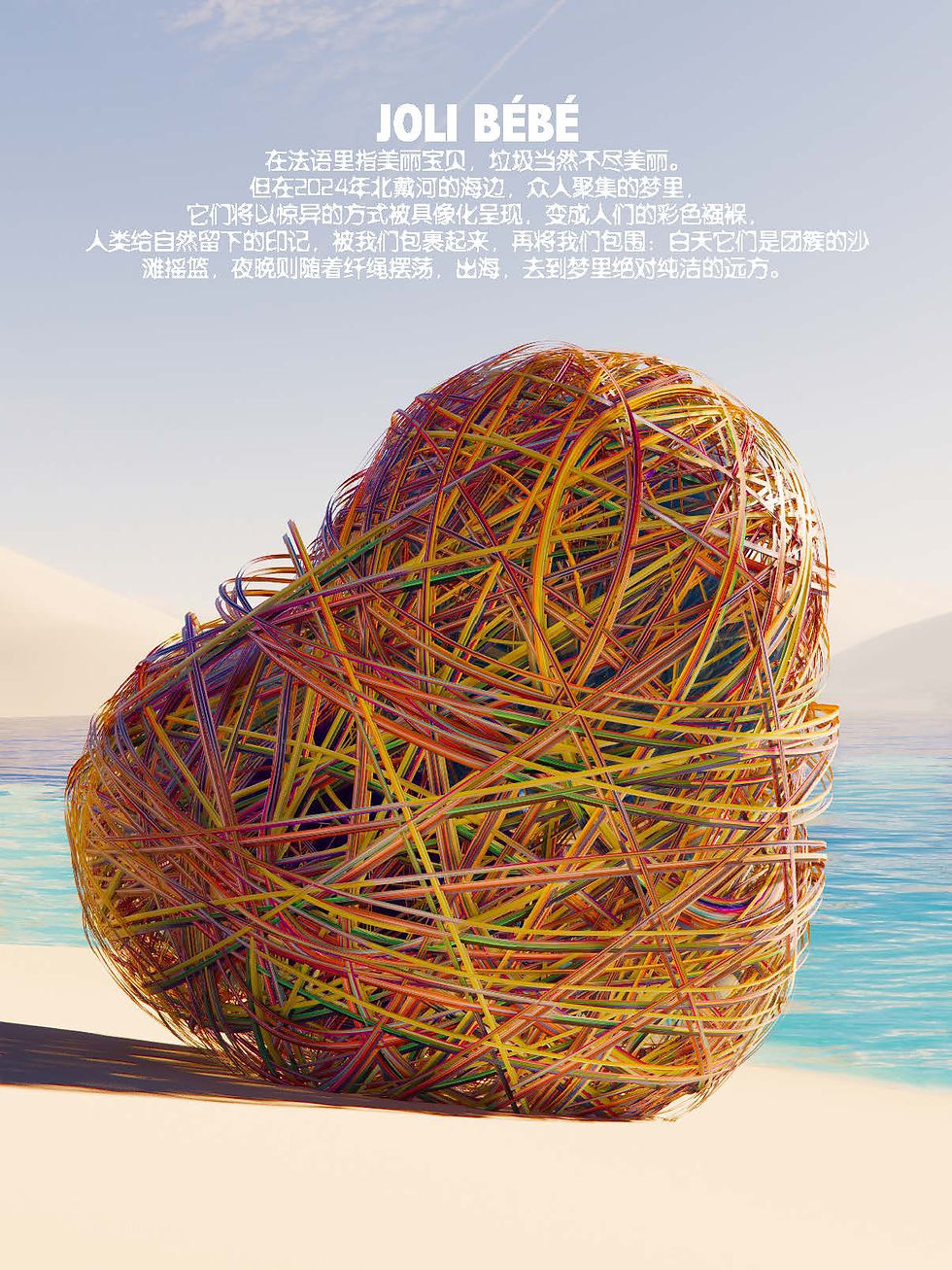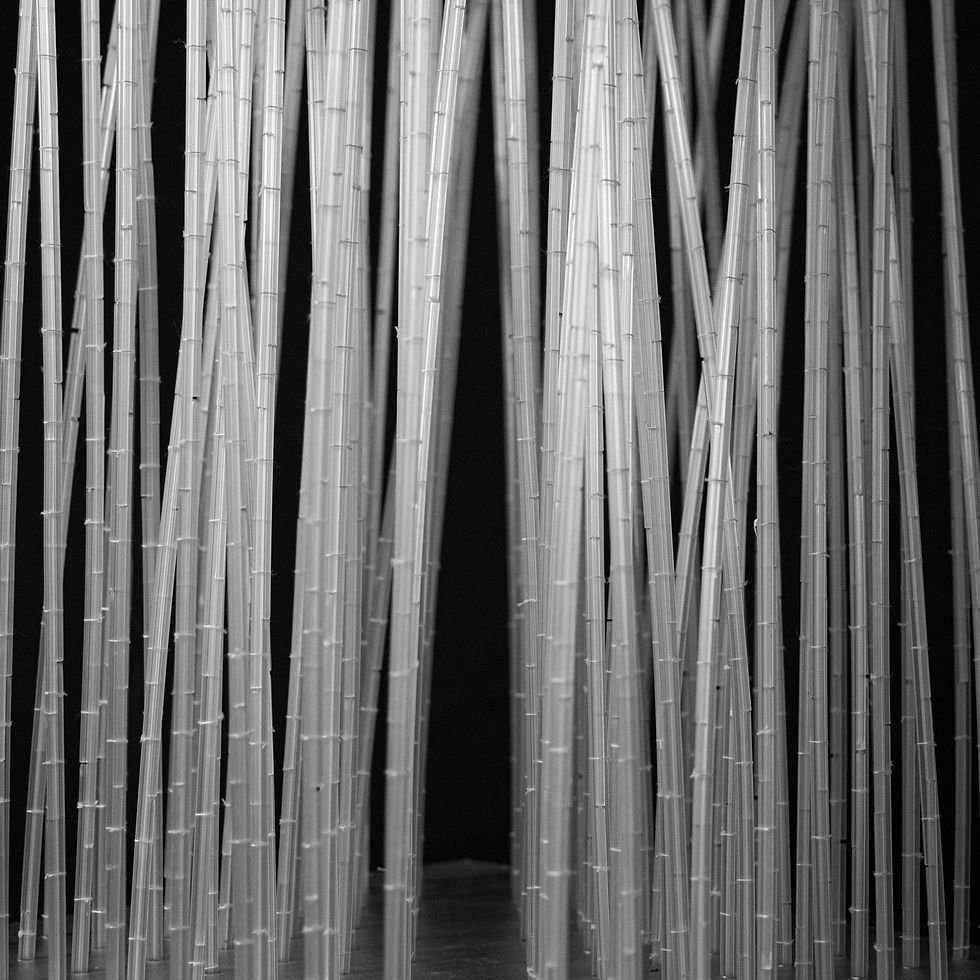
The first time I met Yunan was when we worked together at the Vienna. Later, he and his good friend Jiao Jian rented a small house in Shanghai as their studio, BenTuGuaiWu, to study and create some new works about materiality. In this interview, we explored the duality, connection, and contradiction between "concept" and "material practice"




BenTuGuaiWu Studio
Keyi Zhang: Let's start with what you have been busy with recently. Please introduce your studio to us, including the village where your studio is located, the studio space and what you are busy with
Yunan Liu: This is not a village, but Shanggang New Village (laughs). This "village" has very complete living facilities, there are many delicious foods next to it, and we live in it. We are now doing something related to materials. We will use some food or things that people usually don't associate with "building materials", and then make these things into materials and use them in some crafts. This kind of material creation method is relatively novel and fun.




Joli Bebe
Keyi Zhang: Please introduce us to one of your previous works, which is also the first work of yours I have seen, Joli Bebe. What logic did you use to create this work and then "release" it back into the sea?
Yunan Liu: Joli Bebe means beautiful baby in French. At that time, there was a cloth shop next to where I lived in London. He sold a lot of threads of various colors, plastic, nylon, and cloth. Starting from these materials, I made a thing with various colors entangled. At that time, I encountered an open call, saying that we should make something on the beach, so we said to release this thing (Joli Bebe) there; after releasing it, I didn't know how to write the copy. A friend said: "Make up a story for it." He said that these things are all waste plastics recycled from the sea, and then say that we picked up garbage on the beach to make this thing and then threw it back. Just a story
Because I care most about the visual effect, I think those stories are very interesting at the conceptual level. Concepts such as concerns about the environment are definitely meaningful. But in fact, the starting point of my creation is not to say that I started from concerns about the environment and then made a form; I definitely started from my visual effects when I made the form: I just wanted to see such a colorful thing, so I made this work. This story is not completely made up. When you talk about this story, you use this work as a material for a re-creation, and then turn it into a narrative.

Joli Bebe
Keyi Zhang: I think the concept of the work your studio is currently doing can be traced back to the previous works; rather than focusing on a concept or narrative level, you may pay more attention to the material and form itself, or the object itself.
Yunan Liu: I think these two things (concept and form) are parallel. Because a narrative has its beauty, and a form also has its beauty. It’s just that many times, in school or when many people do things, they will say that one thing is superior to another. For example, I think it is unlikely that a certain form is derived from a certain narrative. Including the things we are making now, such as some granular things, such as rice, pumpkin seeds, and soybeans, you can actually see that there is a space inside it, a visual effect; but the interesting thing about the things we are making now is that we actually focus on the symbolic value of the material, or the cultural value. Before, when we took this thing out and found a place to cut it, those grandmas would come over and say, "Why are you using food to make a material?" If I use seaweed mud to make a material, or I use clay to make a material, or I use microorganisms to press it into a material, it sounds very modern and scientific; but now the fun of what we are making is that when grandpa and grandma see it, they will think that this thing is food, why is it a material? This is also the fun part of it in terms of concept. So, is Joli Bebe focusing on form or concept? I think it must be both. It's just that our form and concept are not in a causal relationship; it's not because of this form that this concept comes out, and because of this concept that this form comes out; it's a kind of correlation.





Pasta Mountain
Keyi Zhang: I didn't expect that Joli Bebe could be extended to a concept so relevant to what your studio is doing. Next, can you tell us more about the work "Pasta Mountain"?
Yunan Liu: Yeah you can call it Pasta Mountain. This tofu block is made of a mold. At the time, I was in London. At the beginning, I was folding clothes at home; then I found that folding it was very interesting. Because when you fold it more, it will form a block. We usually understand the shape from point-line-plane. I found that in the process of folding clothes into a block, it turns from a very abstract surface into a block. This surface has a thickness, and then it will form a shape after folding it. This shape has certain characteristics.
Later, I thought about the relationship between the pieces and the body. Later, I went to the street and saw someone selling this material, which is the wood residue material used to make corks, one piece at a time. This material is very soft, and it can extend to both sides at the same time. Then I went home and started folding this thing. On the one hand, the shape and space it folded are more interesting; on the other hand, you can see the next piece through the previous piece. Finally, I stacked up this small pasta mountain. I hope it can abstractly extract the interesting parts of this pasta mountain, so I turned it upside down. The name of this white plate is pasta mountain.




A Riot of Calmness
Keyi Zhang: Tell us about the creation process of the artwork A Riot of Calmness. How did you develop it from materials into an architectural form, and a changeable architectural form.
Yunan Liu: At that time, I had nothing to do at home during the epidemic, so I bought a lot of straws and cut them into strips. I wanted to make a straw block, such as a 10 cm by 10 cm straw block. I wove three straws together to make such a thin block, a thin strip. Then I kept weaving and weaving and weaving it until it was very long, maybe half a meter long, a little like bamboo. Stand it in the air like this and wave it. The curved shape of this thing is very beautiful. After designing it as a pavilion, leave a path in the middle for people to walk. The other parts sway with people's movements.




A Riot of Calmness
Keyi Zhang: The name of Supernatural Natural History is really interesting. Is it your work during the SCI_Arc period?
Yunan Liu: This work is from Andrew Zago's studio. Its theme is called Urform, which is about Goethe. Goethe became interested in natural history and began to do some natural history research of his own. Then he began to imagine some strange natural history principles, such as the prototype of everything. Zago wanted us to make a shape that was characterized by a combination of virtual and real, and had both characteristics at the same time.
I pressed a bunch of things together. I found a lot of branches, grass... This was the earliest material test. At that time, I took some very thin branches and paper strips, glued them together with white glue, and then I took a table saw or something to cut it out. Later, I wanted to improve my technology a little bit, I wanted to have a better control over this object, so I started to study various adhesives, how to turn this thing into a very solid material. Then the last picture appeared. I poured a lot of glue into it. After two days, it became very hard and expanded. I used iron wire to wrap it very tightly, and then put it in the vacuum compressor to press it overnight. Then the next day, it came out as a "big wooden stake" like a stone. I took this big wooden stake to the woodworking table and cut it, and it became a kind of Graphic (visual image texture). What is my own understanding of it? I like its duality. It is not the duality of reality and virtuality as Zago said; I like its duality of Spatial and Graphic (space and visual texture): on the one hand, it is very flat, which is a visual effect; but on the other hand, you can see how these materials are pressed together through this visual effect, such a duality.
Keyi Zhang: I think this interview is great. It is a circle from the studio, and then returned to the original source of inspiration, which is also the source of inspiration for your current studio.
Yunan Liu: Yes, and the technology we are working on now allows me to imagine that if I put everything in the world and press it, it can press out something. This design can be all strips or granular, it can be conceived in any way, but it is essentially about the stacking of materials and visual effects.




Supernatural Natural History
INTERVIEWER: KE ZHANG
CURATOR: KE ZHANG
EDITOR: CHENYU LIN
GRAPHIC DESIGNER: YUXUAN WEI

Leo Liu is a designer based in Shanghai, holding a Bachelor of Architecture from the Southern California Institute of Architecture (SCI-Arc) and a Master of Landscape Architecture from Harvard University Graduate School of Design (GSD). His work navigates the duality between concept and materiality, exploring how design bridges abstract ideas and tangible realities.